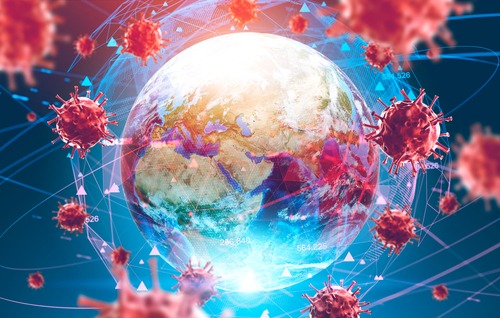
Even with the rollout of mass vaccination worldwide, COVID-19’s spread is nowhere near an immediate end.
So, it might seem perplexing when biosecurity researchers appear optimistic about a future without pandemics.
That reality is exactly what a new report has outlined. Released this week by the Bipartisan Commission on Biodefense, ‘The Apollo Program for Biodefense: Winning the Race Against Biological Threats’ is a bold call to action for the United States to create and disseminate the necessary technologies to defend against pandemics—and within this decade. It’s an effort that could be as grand as the famous Apollo spaceflight program.
“While the outsized effects of COVID-19 demonstrate how vulnerable the United States is to biological threats, our response to COVID-19 also illuminates the country’s astounding potential in terms of resources, manpower, and creativity,” said Commission Co-Chair, former Senator Joe Lieberman. “The rapid creation of multiple COVID-19 vaccines speaks to that limitless potential.”
The Apollo Program for Biodefense — which at $10 billion annually would be a fraction of what the COVID-19 pandemic has cost — would create an environment in which “we detect and continually trace any new pathogen from the source; where we can distribute rapid point-of-person tests to every household in the country within days of that detection; where effective treatments are already in-hand; where vaccine development and rollout occur in weeks rather than years; and where pandemics will never again threaten the lives and livelihoods of Americans and people around the world,” according to the report.
The report describes a range of technological advances including an integrated national pathogen surveillance system and forecasting center as well as needleless methods of drug and vaccine administration. These technology priorities, identified as critical to a pandemic-free future, were vetted by 125 experts whose opinions were featured in the document.
Building on Operation Warp Speed, the public-private partnership created under the Trump administration, The Apollo Program for Biodefense could “produce breakthroughs in areas as varied as precision medicine, sustainable food production, manufacturing at scale, and even space travel (just as space travel led to innovations in health and medicine). These advances could also accelerate the growth, and improve the strength, of the U.S. bioeconomy, which is already larger than the U.S. semiconductor industry.”
To achieve these goals, the report’s authors ask that the U.S. government enact the following:
- Fully implement the recommendations in the Commission’s 2015 ‘National Blueprint for Biodefense’ in which the organization calls for a litany of measures, including rapid point-of-care diagnostics and a modern environmental detection system.
- Develop a National Biodefense Science and Technology Strategy to defend against pandemics and biological threats before the end of the decade by streamlining research knowledge from academia and the private sector to interagency efforts of the federal government.
- Establish a cross-cutting budget for the Apollo Program for Biodefense as part of the unified biodefense budget.
- Congress should approve multi-year appropriations allowing for agencies to procure systems and medical countermeasures that take years to produce.
Among the other calls to action include the creation of more capable and efficient vaccine and multi-pathogen therapeutic drug development programs. Science is at the point where researchers can establish one vaccine that translates into the development of multiple vaccines for other pathogens in the same viral family. There are 25 viral families known to infect humans, and scientists with the right funding and support could create prototype vaccines for each of these families. As for therapeutic drug development programs, the report’s authors say that investments must be made in host-directed antivirals and monoclonal antibodies targeting multiple viral species.
Administering vaccines by pain-free microneedle patches could reduce the reliance on cold chain storage and transportation. Intranasal or inhalable drugs would also allow for self-administration.
However, successful drug and vaccine development is only half the process. It must be equally matched by a coordinated manufacturing and distribution initiative. Part of this could be accomplished by the proliferation of platform technologies or “technologies that use the same processes for manufacturing, formulation, and delivery of a drug or vaccine against multiple different pathogens” which can be “quickly repurposed against a new pathogen without much need to make changes to physical infrastructure of established production processes.”
The Apollo program for Biodefense addresses more than individual disease treatment. Its global scope of prevention includes a proposed national pathogen surveillance and forecasting center. Current infectious disease forecasting capabilities rely on data that may be unavailable for weeks. By “aggregating diverse data sources in real-time” researchers can forecast infectious disease outbreaks to further predict the likelihood of potential pandemics. Real-time monitoring means gathering information from “clinical molecular diagnostics, distributed sentinel surveillance, digital pathogen surveillance, laboratory biosafety monitoring, and animal and environmental pathogen surveillance.”
“It is our belief that with the right encouragement and policies, groundbreaking and lifesaving technologies could be American reality before the end of this decade, creating a layered and effective defense against future biological threats,” said Commission Co-Chair and former Homeland Security Secretary Tom Ridge. “Now is the time for an Apollo Program for Biodefense – with the same ambition and ingenuity that put the first human on the moon in 1969.”




